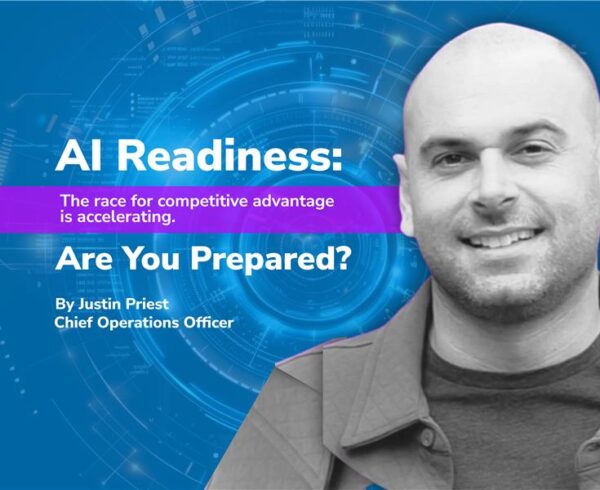In the ever-evolving business landscape, accessing the right talent is pivotal to achieving success. Whether it’s about nurturing internal expertise, tapping into external resources, or acquiring specialized skills, the approach you take in acquiring talent can significantly impact your organization’s trajectory. In this comprehensive guide, we delve into the three primary strategies for acquiring talent: building, borrowing, and buying. We’ll explore the intricacies of each approach, weighing their advantages and disadvantages to help you make an informed decision that aligns with your business’s unique goals. Along the way, we’ll provide real-world examples and offer valuable insights to guide your talent acquisition strategy. So, let’s embark on this journey to discover the optimal path for your business’s success.
BUILDING TALENT: THE LONG-TERM INVESTMENT
Building talent within a company requires a long-term commitment, but it can pay off in the end with a loyal and skilled workforce. By investing in training and development programs, companies can help their employees grow their skills and stay up-to-date with industry trends. This not only benefits the employees but also the company as a whole, as it leads to increased productivity and innovation.
Investing in talent is not just about providing training and development opportunities. It also involves creating a positive company culture that values and recognizes employees’ contributions. When employees feel valued and invested in, they are more likely to be engaged and productive. This positive work environment can also help attract top talent, creating a virtuous cycle of talent acquisition and retention.
According to a recent study by the Society for Human Resource Management, companies that invest in employee development have a 25% higher chance of retaining their employees. This is because employees who feel valued and invested in are more likely to be satisfied with their jobs and less likely to look for opportunities elsewhere.
In conclusion, building talent through long-term investment in training, development, and company culture can be a highly effective talent acquisition strategy. It leads to a skilled, loyal workforce, increased productivity, and a positive work environment that attracts top talent.
BORROWING TALENT: A TEMPORARY SOLUTION
In addition to building and buying talent, businesses can also borrow talent by hiring temporary workers or engaging contractors. This approach offers a flexible and cost-effective way to access specialized skills and expertise when needed. By utilizing temporary workers, companies can fill gaps in their workforce quickly, without the long-term commitment of hiring full-time employees. This also presents an opportunity to assess potential candidates before making a permanent hiring decision, thereby reducing the risk of making a poor choice. Furthermore, borrowing talent can alleviate administrative and onboarding burdens, as temporary workers are typically hired through staffing agencies that handle these tasks.
Many organizations have successfully leveraged the borrowing talent strategy. For instance, a prominent U.S. credit union partnered with ConsultNet to hire temporary workers. This collaboration resulted in a remarkable 40% growth in the credit union’s cybersecurity department. Additionally, the average time required to hire new personnel was reduced to an impressive 7 days. This enabled the credit union to respond swiftly to evolving cybersecurity threats and maintain a high level of security for its customers.
Overall, borrowing talent stands as a valuable option for businesses seeking specialized skills on a temporary basis. It provides flexibility, cost-effectiveness, and the chance to thoroughly evaluate potential candidates before committing to a permanent hire. However, it’s crucial to note that this approach may not be suitable for all positions or organizational cultures. Companies should carefully consider their specific needs and objectives before choosing the most appropriate talent acquisition strategy.
BUYING TALENT: THE QUICK FIX
In contrast to building talent through long-term investment, buying talent presents a rapid solution to acquiring specific expertise. This approach involves hiring experienced professionals or contractors who possess the skills and knowledge your business immediately needs. While buying talent can fill gaps in your workforce and provide quick access to specialized capabilities, it comes with its own set of considerations.
One significant challenge of buying talent lies in the associated costs. Hiring experienced professionals often comes with higher salary demands and potentially hefty recruitment fees. Additionally, the costs of onboarding and integrating new hires can further add to the overall expenses. It’s crucial to carefully assess whether the benefits gained from buying talent outweigh the financial implications, especially for smaller businesses or those with limited budgets.
Another challenge involves finding the right fit. Buying talent doesn’t guarantee that the hired individual will seamlessly integrate into your company’s culture or work well with existing teams. There’s a risk of hiring someone whose skills align with your requirements but whose personality or work style clashes with your organization. This can lead to potential conflicts, reduced productivity, and a negative impact on team morale.
Furthermore, loyalty can be a concern when buying talent. Professionals who are hired for specific projects or short-term contracts may not develop the same level of commitment and loyalty as employees who have grown within the company. This can result in higher turnover rates and increased costs associated with constantly replacing personnel.
Therefore, it’s crucial to carefully weigh the pros and cons of buying talent before making a decision. While it offers a quick fix for acquiring specific expertise, it comes with challenges related to costs, finding the right fit, and loyalty. Ensure that this approach aligns with your business’s long-term goals and budget before proceeding. If you’re considering buying talent, it’s advisable to thoroughly evaluate candidates, negotiate compensation packages wisely, and foster a welcoming and inclusive work environment to enhance the chances of a successful integration.
WHICH OPTION IS RIGHT FOR YOU?
The decision between building, borrowing, or buying talent is a crucial one that can significantly impact your business’s success. To make an informed choice, it’s essential to carefully evaluate several key factors.
1. CONSIDER THE LONG-TERM COST-EFFECTIVENESS OF EACH APPROACH.
Building talent requires a substantial upfront investment in training and development, but it can yield significant returns in terms of employee productivity, innovation, and loyalty.
Borrowing talent can be a cost-effective way to access specialized skills for specific projects or during peak periods, but it may not align with your long-term talent management strategy. Buying talent, on the other hand, involves acquiring experienced professionals who bring immediate expertise, but it can be the most expensive option and may disrupt your existing company culture.
2. ASSESS THE AVAILABILITY OF THE TALENT YOU NEED.
If your industry is highly competitive and the skills you require are in high demand, building talent may be the best option to ensure a steady pipeline of qualified candidates. However, if the skills you need are more specialized or temporary, borrowing talent or buying talent may be more suitable.
Consider the level of control and flexibility you desire. Building talent gives you complete control over the selection, training, and development of your employees, ensuring they align with your company’s values and culture. Borrowing talent provides less control but offers greater flexibility to scale your workforce up or down as needed. Buying talent offers the least control but can provide quick access to specialized expertise.
Evaluate the impact of each approach on your company culture and employer brand. Building talent fosters a sense of loyalty and commitment among employees, strengthening your employer brand and attracting top talent. Borrowing talent can bring in fresh perspectives and ideas, but it may also create a sense of temporary or disposable workers. Buying talent can quickly fill skill gaps, but it may disrupt your existing culture if not managed effectively.
3. ALIGN YOUR TALENT ACQUISITION WITH YOUR LONG-TERM BUSINESS GOALS.
Consider the nature of your business, the industry landscape, and your future growth plans. Each approach has its advantages and disadvantages, and the optimal choice will depend on your unique circumstances. By carefully evaluating these factors and seeking guidance from experts when necessary, you can make an informed decision that supports your business’s success.
CHOOSING THE BEST PATH FOR YOUR BUSINESS
Ultimately, the decision between building, borrowing, or buying talent depends on your business’s unique requirements, objectives, and resources. There is no one-size-fits-all approach, and the ideal strategy may change as your business evolves.
To make an informed decision, it’s crucial to thoroughly evaluate the pros and cons of each approach, considering factors such as cost, time, risk, and alignment with your long-term goals. Building talent requires a substantial investment in training and development but fosters a culture of loyalty and expertise within your organization. Borrowing talent offers flexibility and cost-effectiveness, but it may limit your control and long-term strategic planning. Buying talent provides immediate access to specialized skills but can be expensive and may not guarantee a cultural fit.
If you find yourself at a crossroads, seeking professional guidance can be invaluable. Our team of experts is well-equipped to help you navigate the complexities of talent acquisition and develop a customized strategy that aligns seamlessly with your business objectives. Contact us today to schedule a consultation and unlock the full potential of your talent acquisition strategy.






